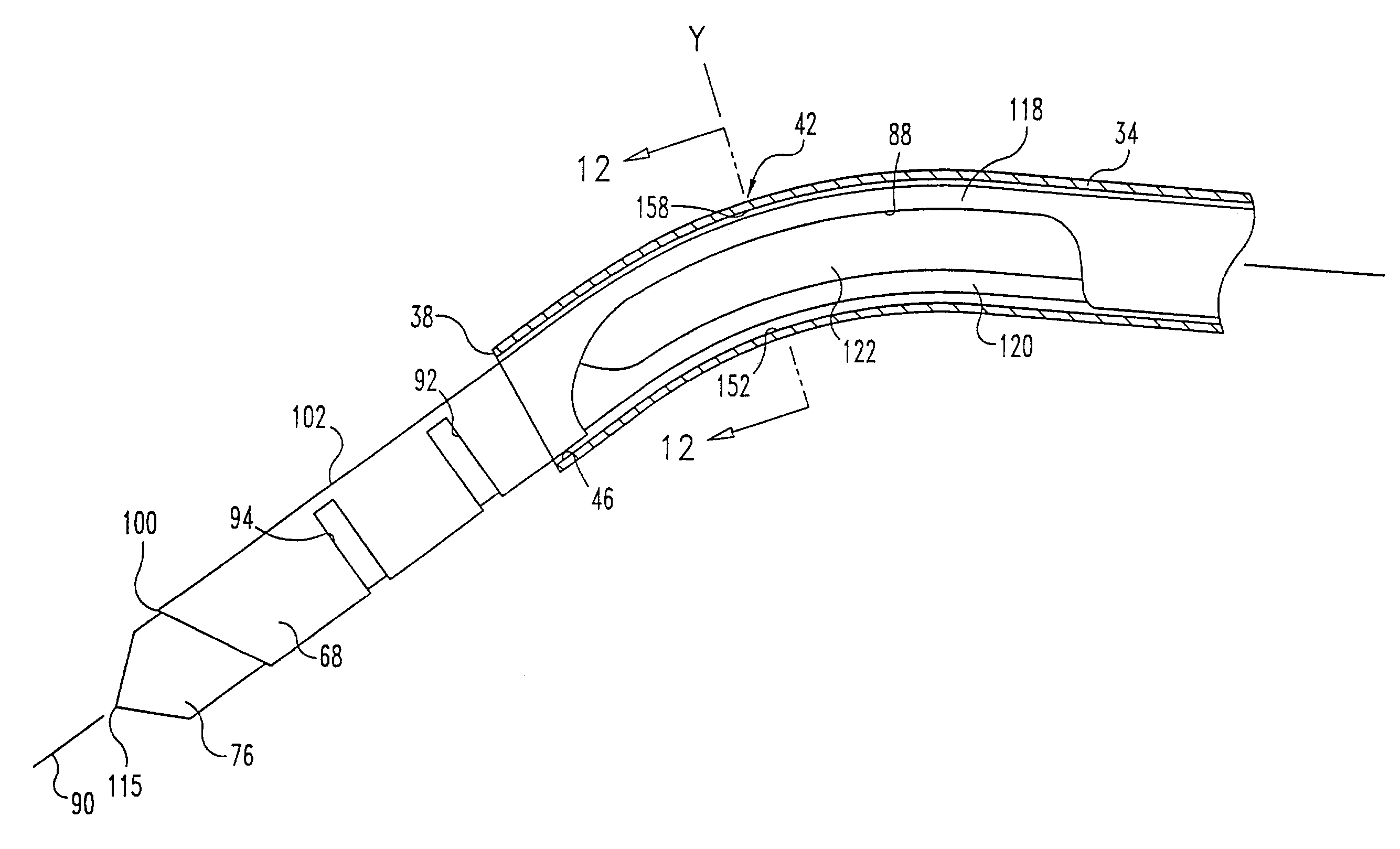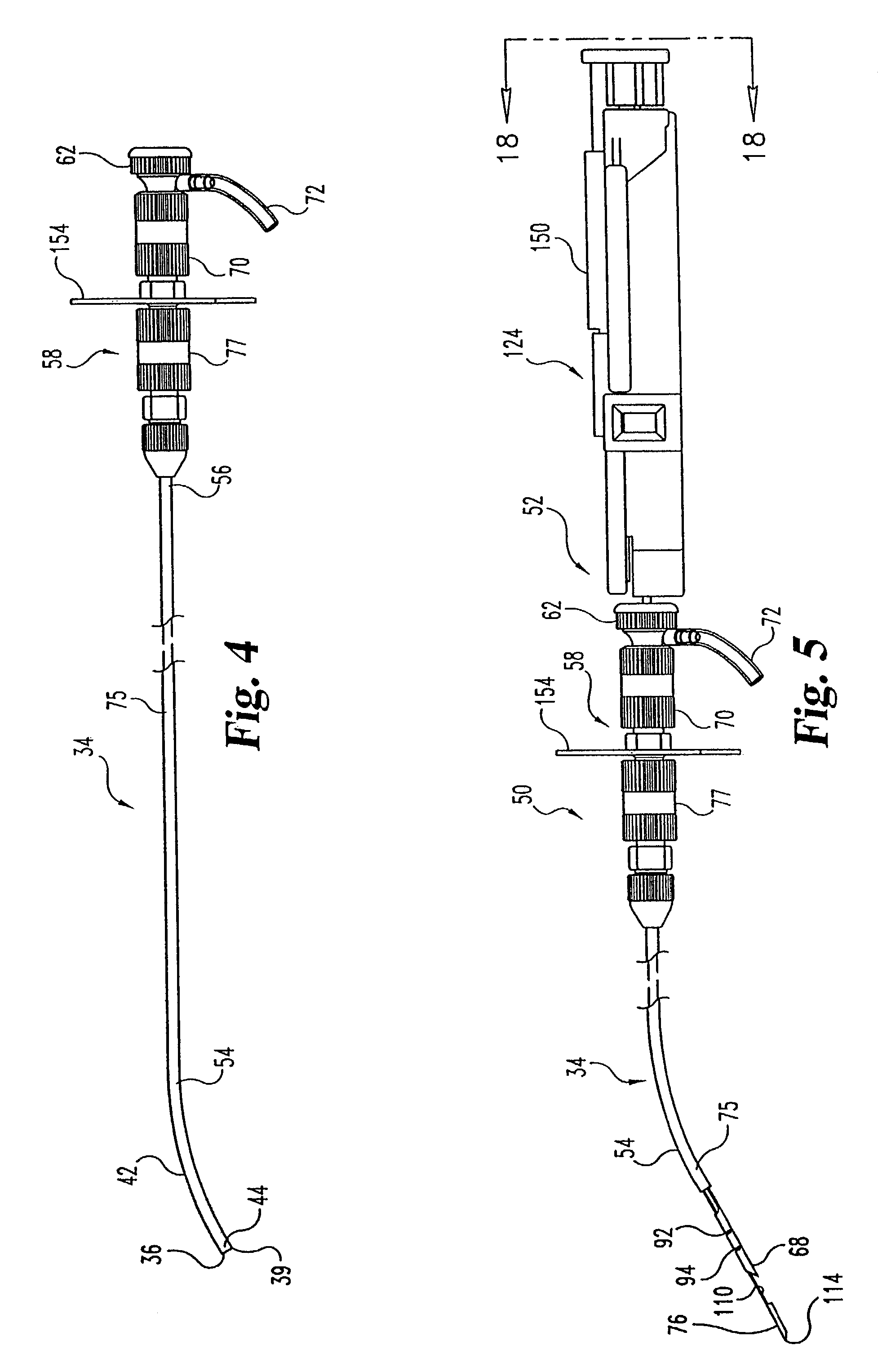Flexible tip medical instrument
a flexible tip and medical instrument technology, applied in medical science, surgery, vaccination/ovulation diagnostics, etc., can solve the problems of no longer acceptable practice, no effect of obtaining adequate liver tissue, and generalized pain
- Summary
- Abstract
- Description
- Claims
- Application Information
AI Technical Summary
Benefits of technology
Problems solved by technology
Method used
Image
Examples
Embodiment Construction
[0041]For the purposes of promoting an understanding of the principles of the invention, reference will now be made to the embodiments illustrated in the drawings and specific language will be used to describe the same. It will nevertheless be understood that no limitation of the scope of the invention is thereby intended. The invention includes any alterations and further modifications in the illustrated devices and described methods and further applications of the principles of the invention that would normally occur to one skilled in the art to which the invention relates.
[0042]The present invention provides devices and assemblies to access an internal organ through a patient's venous and arterial system to obtain a tissue specimen from the target organ. A long narrow tube or introducer cannula is precisely placed through interconnecting veins and arteries along a tortuous path. Previously used coring needle assemblies exhibited pronounced binding with the introducer cannula as t...
PUM
 Login to View More
Login to View More Abstract
Description
Claims
Application Information
 Login to View More
Login to View More - R&D
- Intellectual Property
- Life Sciences
- Materials
- Tech Scout
- Unparalleled Data Quality
- Higher Quality Content
- 60% Fewer Hallucinations
Browse by: Latest US Patents, China's latest patents, Technical Efficacy Thesaurus, Application Domain, Technology Topic, Popular Technical Reports.
© 2025 PatSnap. All rights reserved.Legal|Privacy policy|Modern Slavery Act Transparency Statement|Sitemap|About US| Contact US: help@patsnap.com



